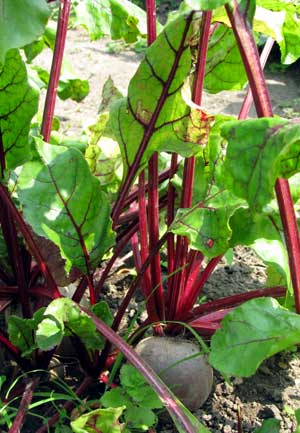|
|
This report summarises the findings of a 2004 overseas study tour which hosted 3 growers and 2 processor representatives of Australias Beetroot industry. The Tour group analysed the processes and operations of the American and European beetroot industries. The Study Tour covered the following topics :
Summary : Analysis of the Major Beetroot Seed Producers
Investigation into the availability of new varieties more suited to the Australian Environment
Compare and contrast operational activities of Beetroot production in America and UK with Australias Beetroot production activities
Compare and contrast the retail display of Beetroot products in America and the UK with Australias and investigate and analyse new product innovations
Discussion : Regarding seeds it seems that Australian producers have not been able to become actively involved in the seed production process nor have they received ongoing information regarding developments in new varieties and treatment techniques that the other producing countries are currently using as standard. However as a result of the Tour it is fair to say that this is well into the process of change. The growers themselves are now more actively involved in the process and seed companies are enjoying this input. It is fair to say that for whatever reasons the industry has struggled to keep up to date with new varieties and seed treatments in recent years, however this has now changed as a result of the Tour all varieties identified for evaluation are included in trials growers are looking forward to the results. Seed companies too are now more active in understanding our requirements and so we are confident that this in process of inclusion at all levels will ensure the industry resolves some of the current issues regarding this topic. The different growing and harvesting techniques witnessed were a real experience for all Tour participants. Some of the techniques and equipment will be able to be considered for Australian production however it is recognized that soil and environmental conditions in Australia will mean they require some adaptation prior to successful usage. There was also much to be learnt from the different processing factories visited, however due to the inability to take photos in these establishments we were unable to show this graphically. In general there was no factory that was a standout in all facets of production however some were definitely better than others overall, each factory including Golden Circle had facets that did comparatively well with and some they dont. The challenge for the Australian industry is to work toward ensuring that they improving those parts of there operation that were identified as being done better else where. The Australian marketing of Beetroot would appear to be ahead of OS competitor in regards to total consumption, consumer demographic and product availability via fast food outlets. More work needs to done on innovative packaging and it would be fair to say that the UK is leading in this regard, the super market in store support of this new packaging will ensure its success and replication in the Australian market would appear to be an obvious opportunity for Beetroot and any other product with a similar usage. One obvious risk to all markets is the decline of the current major demographic being the aged population, the American market is well into decline and the ability to get Beetroot consumed by the next generation is a challenge for all producing countries. Acknowledgements : We would like to extend sincere thanks to Heidi Martin QDPI for her exhaustive efforts in assisting us in the original HAL application for funding and organising many of the visits and contacts made during the Tour. Also the non Touring organising team comprising of Peter Lerch, Ashley Zelinski, Nigel Todd thank you very much for your efforts. The touring party also made considerable contribution and we thank them also. Considerable in kind contributions were provided by seed and equipment companies including :
Your input, friendship and day to day direction was what made this Tour the incredible learning experience it was and we look forward to a long lasting friendship. We would like to thank our Travel agency Flight and in particularly Tracey Provost for her diligent efforts resulting in a very smooth trip. We would also like to thank all the growers who allowed us their time, effort and access to their operations. We greatly enjoyed the sharing of information and friendships displayed, and look forward to returning your hospitality in the future. Thank you to Dr Per Rydahl and Dr Svend Christensen from the Department of Agricultural Research Denmark, their futuristic research in Agricultural production was a fascinating and we look forward to reading of future results. Thanks to Dr Irwin Goldman Associate Professor of Horticulture Department of Horticulture University of Wisconsin-Madison for his incite into the history of Beetroot breeding. The project team gratefully acknowledges the financial support of Golden Circle Limited, QLD Department of Primary Industries and Horticulture Australia Limited The Australian Government provides matched funding for all HALs R&D activities. |
||||||||||||||
|

